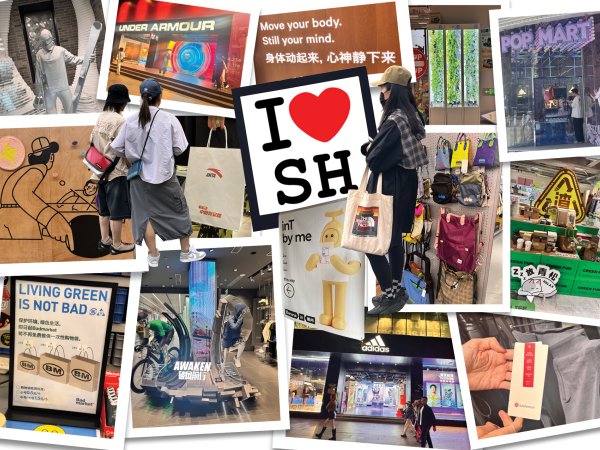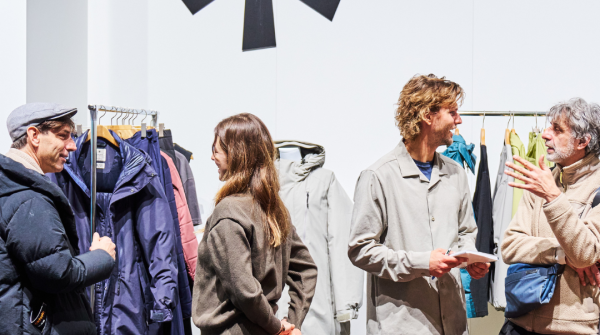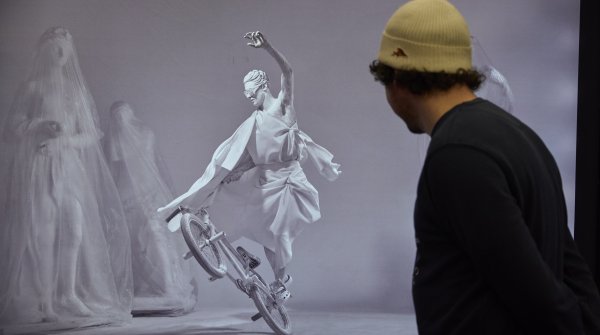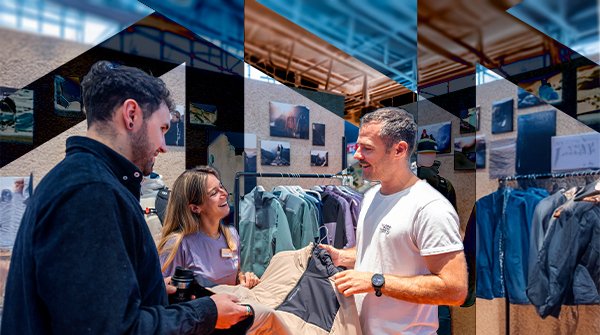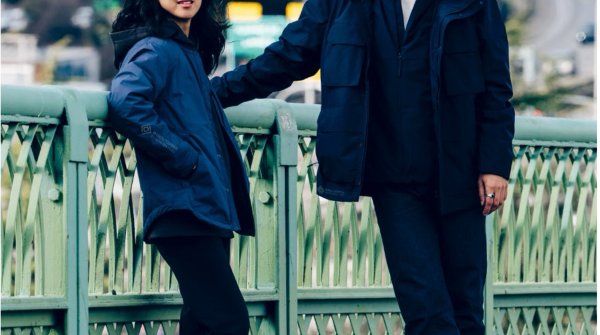When China opened up to Western brands, joint ventures were secured, and the kudos thirty years ago were strong in owning a Western brand. To the point, local brands would be named Western names to encourage sales. What a difference a generation makes. Today, it is no longer the case. You have to be so much more than a name. You have to perform, you have to look good, and it doesn't matter where it is from—overseas or a Chinese domestic brand.
Today's discerning consumers want the best, and whilst there is room in the market for overseas brands, it isn't easy access. There is plenty of competition, as Chinese design has gained creative confidence and there is a new level playing field. No longer the land of copying, today's brands in China have vision and clout.
Multiple retail outlets in mega stores on high streets, the array of shopping malls spread throughout the city, and the familiarity of global brands including Adidas, Nike, Uniqlo, Lululemon, and Underarmor are regular sights. More so now, ON Running and Hoka are becoming popular for younger consumers. However, homegrown brands, including Anta and Li Ning, pack a punch and offer price differentiation.
China's big-volume sports brands have grown, pulling from the rich menu of premium ingredients available globally in performance yarn and fabrics and creating vertically, like Anta, an award-winner at ISPO Textrends for its performance fabrics. Design is also crucial and on-point, with Asian fit key, something Western brands failed to understand before entering the market.
China is now a cashless society, everything is digital, and trust me, if you forget your phone you are screwed. So, armed with Alipay, the essential app for ordering 'didi' (China's Uber equivalent), paying for everything from food, trains, flights, and at retail with a QR code (maybe too easy, apologies to my bank manager!!) I set off to discover the best Shanghai offers on the sports and outdoors scene - and WOW, I wasn't disappointed!
China's consumers are on the move, pursuing sports and wellbeing, combined with urban outdoors and health. A myriad of shopping malls, each with a sense of luxury and immersive experience, scatter through the city, catering to all target markets in terms of age and income.
The first port of call was the Arc'Teryx four-story flagship store, hosting the museum of the brand's background, educational, super interesting and informative. On entering, you are walked through a mock-mountain terrain with the latest collections nestled between rock formations, homage to the Arc'Teryx' heritage of a climbing brand. Climbing up via the industrial staircase, each floor is spacious and informative, and sales staff are attentive until you reach the fourth-floor museum, where you are immersed in the brand's history.
In addition to a comprehensive guide to how the brand has been involved, the Arc'teryx RE program has a managed station incorporating sustainable practices to get the most out of their product. ReGEAR, getting used gear back in action; ReCARE, sharing how consumers can take care of their product; and ReCUT, where waste textiles are diverted. Products can be repaired on-site.
After departing the store with a shopping bag in hand, unable to resist the latest delivery of the T-shirt collection emblazoned with the ubiquitous fossil logo, you can sit and reflect in the Arc'teryx cafe.
Arc'teryx is part of Amer Sports, Inc., a global group of iconic sports and outdoor brands, including Salomon, Wilson, Peak, Performance, and Atomic. ANTA, China's leading sports brand, happens also to be the largest shareholder of Amer Sports, which also includes FILA (Italy), Decente (Japan), and Kolon Sport (South Korea), offering the most extensive range of mass and high-end sportswear.
It's easy to see why ANTA is number one, with significant collections, good price points to suit all digital purses, and excellent R&D, a recent awardee at ISPO Textrends. A partner of the China Olympics, a dedicated store houses collections of the top R&D performance textiles for the general public, whilst they also pursue the Zero Carbon Mission stores, launched in April, to combat emissions. The dominance and clout ANTA Sports has is clear to see, posting earlier this year a record high with their revenue exceeding RMB70.8 Billion (€8.86 Billion)in 2024, a 13.6% year-on-year Increase.
Today, China, a country renowned for its tea, it is the coffee industry that is creating a buzz. Starbucks alone has over one thousand coffee shops in Shanghai, including the Roastery, the largest Starbucks outside of the US. The Roastery is also visited almost like a museum, with coffee beans roasted on site. A host of homegrown brands with loyalty apps and discounts are also featured throughout the city.
This cafe society also moves in-store. As with Arc'teryx Cafe, many stores have a coffee bar counter to enhance the experience they want to provide. This is retail at a very different level.
Next on the list is ISPO Award-winning Bosideng, which has more than 3000 stores in China. The leading down supplier of high-level winter gear, I hit their flagship store to check out their Spring/Summer offering. UV protection is key and essential not just for protection but also for anti-tanning. Switching from winter sports to hiking, cycling, tennis, and golf (all emerging sports), teamed with urban living, the collection is derived from high-performance R&D.
Bosideng offers a family approach in the flagship store, with all members catered for. The second floor has been expanded to be for children's collections only. Again, the brand's pride in its heritage is on show at ground level and on the fourth floor, highlighting the performance applications in layman's terms and designer collaborations in the museum from John Paul Gaultier and Kenzo.
Again, a coffee point is available, and Bosideng-labeled water is handed to you as you peruse the store. The store is about the consumer's experience—the touch, the fit, the experience. But what about the sales?
This is because China's retail model is also e-commerce, and brick-and-mortar outlets offer more showrooms and try-on, touch-and-feel products than the consumer will buy online. Discounts are offered inshore to encourage physical purchasing, but it is becoming increasingly the norm for the purchasing to be completed online.
Clicks versus bricks don't compete in China; instead, they complement. And it isn't just traditional e-commerce; live streaming retail is also essential for a brand. While at Bosideng, the Livestream team was in-store selling live on the various channels from Red Book to Taobao.
Interestingly, Bosideng has a studio specifically for live-streaming. Still, the live-streaming team has found that being on the shop floor offers a better visual, as viewers see consumers in the store, including them in the experience, creating a buying frenzy. It is incredible to watch the speed at which the live-stream salespeople work, moving, talking, and engaging the consumer in front of a bank of mobile phones and under the photographic reflectivity of silver umbrellas, an energetic e-commerce mood.
The power of e-commerce is light-years ahead of anywhere else. From having visited factories that are fully automated in sending out orders immediately to the speed of delivery, the West certainly has some catching up to do.
Stepping into a Kailas store, an outdoor apparel and equipment brand founded in China in 2003, this brand has steadily grown and is one of the Chinese brands that has successfully entered the global market. An ISPO Award winner 2024 for their Kailas Yan GTX High, I couldn't resist the purchase of their FUGA EX330 Vibram sole shoe in their dedicated Grip Lab store.
Kailas has numerous direct and franchised stores in Canada, Switzerland, Spain, Greece, Japan, Singapore, and Malaysia, as well as an online presence with many of the leading sports e-commerce brands.
They are leading the way in China's creativity and R&D, enabling brands to have equal positioning on the global market. Their appeal should inspire other Chinese brands to do the same.
In an active-living direction, the China brand Banana In is one to highlight. A mainstream brand, this mirrors the Japanese Uniqlo retail concept of collections specific to fabric performance. Originally emerging as an intimate apparel brand, Banana In has grown to include urban and outdoor performance. In addition, it has incorporated a playfulness to the collection, not just through its banana design logo but through customisation in-store for consumers to get creative and create something unique.
Being unique in a land of over one billion people is something China's Gen Zers are driving and striving for. With global and homegrown sports brands dominating the high streets and shopping malls, the younger generation is looking for a new buzz.
Heading to the TX Huahjai Youth Energy Center, I found the difference the younger consumer seeks. Cultural and creative hub in Shanghai is a collaboration between two leading Chinese retail giants – Bailian Group and Urban Revitalization Force (URF) Group. The mall adopts a curated retail model, which blends art and culture with shopping to create a unique brand atmosphere and customer experience. And it is super cool. A mix of standalone, music, art, and creativity. A clever concept that still invites the likes of Vans and Nike to sit close by.
Across the street is the multi-story Hai 550, an eco-based concept with a gritty urban appeal. You find the table tennis urban brand Xuperman on the ground floor and a coffee van. It completely contrasts with the sleek marble and clean shopping malls; it is gritty and edgy, emphasizing sustainability through the brands.
It's more than retail; it's a hangout, inspiration, and a place to be seen. It could be the very start of a new era on the retail scene, especially for the niche brands able to showcase there. This is a super interesting development, and if this is what Gen Zers have accomplished, imagine what the up-and-coming Gen Alpha is going to do!
So, signing off from Shanghai, what a journey on the retail front. This is just the tip of the iceberg for sports and outdoor brands in the Chinese market. Even if you combine Shanghai and Beijing, it accounts for only five percent of the country. If you look at some of the emerging new cities, like Chengdu, the potential is even higher, lower cost of living, and higher disposable income.
Whilst Shanghai is a first-tier city and the equivalent of shopping in London, New York, and Paris, it is a platform not just viewed by foreigners but by the remaining 95 percent of the market—so expect it to influence inland.
If you are heading to ISPO Shanghai, remember to set up your WeChat account and download the Alipay app before departing—combined with a digital eSim, you are good to go!
But trendsetting doesn’t stop at ISPO Shanghai. At ISPO Munich 2025, you’ll find a global stage to showcase your brand, test ideas, and build meaningful connections with international industry experts and peers. It’s a place to exchange ideas, spark collaborations, and stay ahead of what’s next in sports. With curated matchmaking, practical workshops, and an engaged professional community, you’ll return with valuable input and momentum for your next move. Be part of it – 30. NOV. – 02. DEC. in Munich.
- Market Shift in Shanghai: Sports is now fashion, led by a creative and discerning Gen Z. Western heritage alone no longer guarantees success; performance and design are paramount.
- Global vs. Local Brands: International giants like Nike and Adidas remain strong, but homegrown brands like Anta and Li Ning have gained confidence with innovative products and competitive pricing.
- Digital Innovation & Retail Experience: China’s cashless, digitally connected society blends immersive flagship stores with advanced e-commerce and livestream shopping, creating a seamless consumer journey.
- Chinese Brand Success Stories: Brands like ANTA leverage R&D and sustainability initiatives to lead the market, while Bosideng and Kailas show how domestic brands go global with performance-driven products.
- Cultural and Retail Trends: Unique retail concepts combine lifestyle, community, and sustainability, appealing especially to younger consumers through creative, experience-driven shopping environments.
- Looking Ahead: While Shanghai leads, emerging cities like Chengdu offer new growth opportunities, reinforcing China’s role as a global innovation hotspot for sportswear.
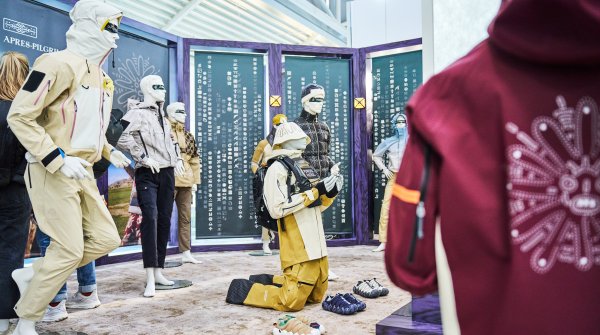 Sports BusinessSustainable ideas for store design
Sports BusinessSustainable ideas for store design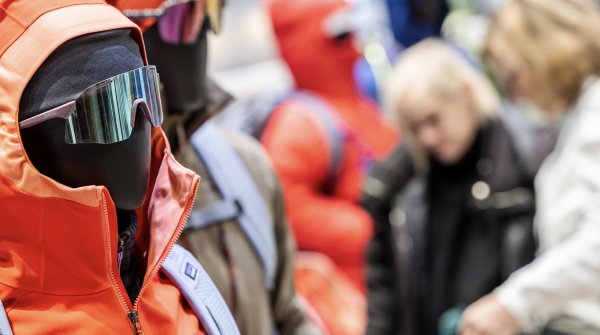 Sports BusinessSports retail in transition: the future playbook for 2025
Sports BusinessSports retail in transition: the future playbook for 2025
- ISPO awards
- Mountain sports
- Bike
- Design
- Retail
- Fitness
- Health
- ISPO Job Market
- ISPO Munich
- ISPO Shanghai
- Running
- Brands
- Sustainability
- Olympia
- OutDoor
- Promotion
- Sports Business
- ISPO Textrends
- Triathlon
- Water sports
- Winter sports
- eSports
- SportsTech
- OutDoor by ISPO
- Heroes
- Transformation
- Sport Fashion
- Urban Culture
- Challenges of a CEO
- Trade fairs
- Sports
- Find the Balance
- Product reviews
- Newsletter Exclusive Area
- Magazine
